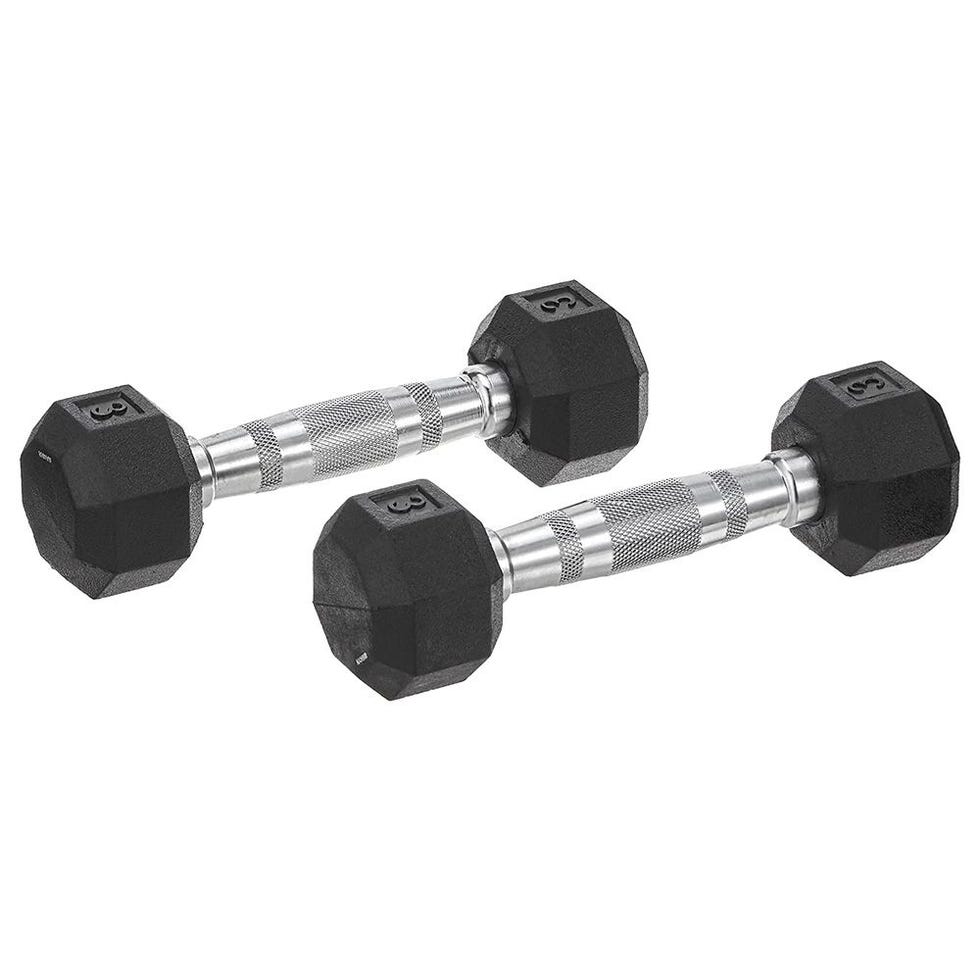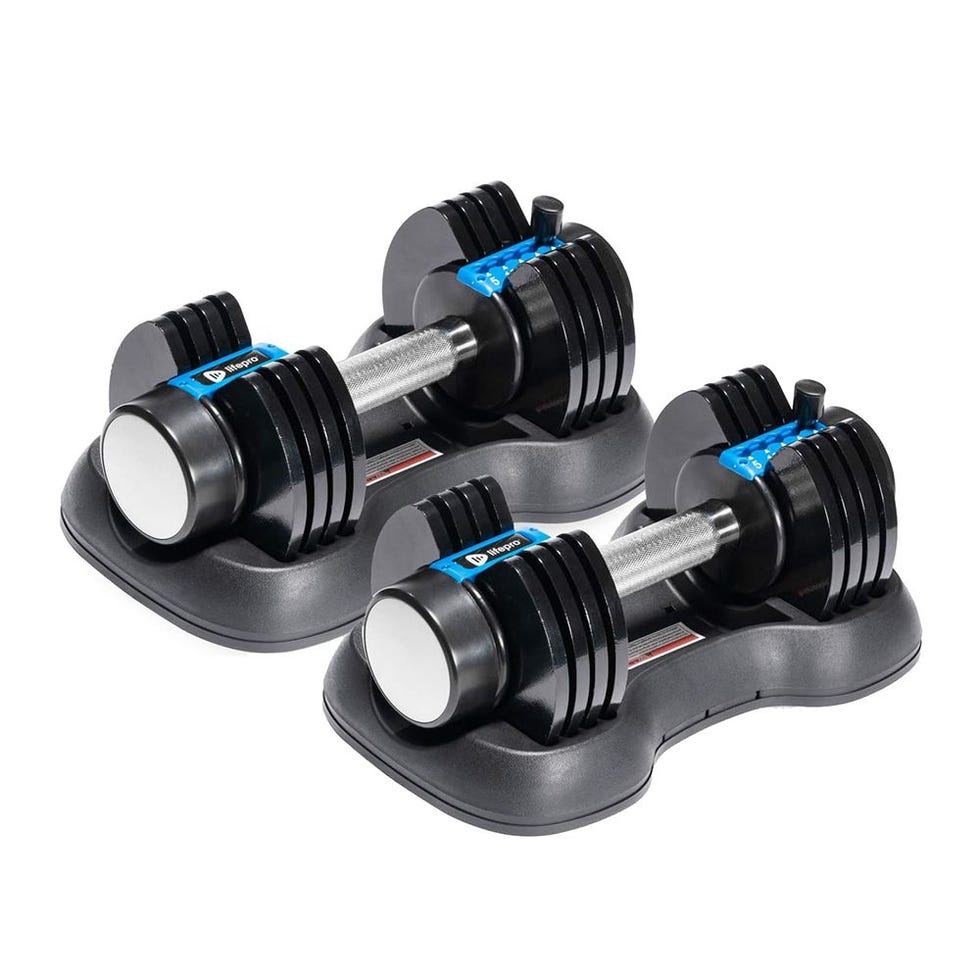Picture this: a dimly lit workout studio, the pounding of sneakers as people furiously push through burpees, all while a coach yells, “Ten more seconds!” as you yearn for that rest period on the other side. Does that give you the vibes of, say, a sweat-drenched Orangetheory class? Or Equinox’s cult-favorite MetCon3 class circa 2012? Or perhaps you’re having flashbacks to the first time you went to your local CrossFit box. That high-intensity, huffing-and-puffing style of workout is what many associate with the early days of metabolic conditioning: vigorous, no-frills, maybe even a bit old-school. But fast-forward to today and metcon has entered its resurgence era.
Over the years, higher-intensity workouts took a back seat for exercisers chasing low-impact or recovery-focused fitness trends. (Think slow and controlled sculpt classes or the social media–driven craze for low-cortisol workouts.) But the approach is making a return thanks to new scientific insights backing its effectiveness.
Meet the experts: Jenna Matroni, CPT, is a New York City–based personal trainer at Equinox. Heather Milton, CSCS, is a clinical exercise physiologist at the Sports Performance Center at NYU Langone Health.
Recent research found evidence that metabolic conditioning workouts may help produce more substantial results in terms of fat loss, muscle gain, and overall performance when compared to traditional moderate-intensity, steady-state cardio. In particular, high-intensity interval training (HIIT), perhaps the best-known version of metcon, is being touted as one of the most time-efficient ways to get cardiovascular and metabolic benefits.
So, if you’re searching for the ultimate sweat to help you change your body composition in less time, metcon may be the perfect choice for you. Here’s what you need to know about its health and performance payoffs and how to integrate it into your routine.
Try This 7-Day HIIT Plan To Rev Your Metabolism
What “Metcon” Actually Means
Metcon workouts are a type of interval training that involves rotating through strength exercises and cardio bursts, with intermittent rest periods. They come in a wide range of styles, and you don’t necessarily need to go to a specialized gym to reap the benefits.
Another outdated misconception: that you have to gasp for breath every time you do metcon. “It’s a workout that has exercises that vary from high intensity to moderate intensity,” says Jenna Matroni, CPT. Matroni’s metcon classes are always designed to exercise your cardiovascular system through short bursts of activity, but also to target your upper body, lower body, and core with traditional, controlled strength training.
HIIT vs. metcon: What’s the actual difference? High-intensity interval training is a type of metabolic conditioning—but not all metcon is HIIT. Metcon workouts typically involve lifting weights, but they can also include less-intense cardio than what you might picture with traditional HIIT (like cardio bursts in the form of jogging, rowing, and stationary cycling). “Metcon can be either HIIT or steady state,” says Matroni. Got it!
Why You’ll Net Major Gains
The main benefit is right there in the name. “It conditions your metabolism,” says Heather Milton, CSCS. While most types of exercise do this to a certain extent, metcon is especially useful for achieving it, she notes, because of the circuit style and the simultaneous emphasis on cardio and strength. “That is one of the best ways you can improve your aerobic capacity, your metabolism, as well as build muscular strength and maintain lean mass,” Milton says. “So if people are looking to lose weight or look more ‘cut’ or fit, [metcon is] a good way to do it.”
Metcon workouts increase post-exercise oxygen consumption as well, when the body continues to burn calories long after the workout is over, which helps with shedding fat and improving metabolic function.
They also help to boost your VO2 max—which is the maximum amount of oxygen your body can use while exercising and a key marker of health and fitness—while preserving muscle. To put this in a real-life scenario, when you’re doing traditional steady-state cardio, like a long, slow run, you’re building aerobic metabolism, which is important for stamina and endurance—but you’re losing muscle and fat at the same rate. But “with metcon, you’re utilizing the muscles in more of a resistance-training fashion,” Milton explains. “That’s how we can get that marriage of improving VO2 but also improving muscle composition.”
The upsides get even more nuanced from there. Low-volume HIIT can help people with type 2 diabetes manage their condition better (by improving insulin resistance and blood sugar) and boost cardiovascular health, per a recent study in Frontiers in Endocrinology. A short evening session of high-intensity exercise before a night of poor sleep reduced the next day’s memory impairment caused by sleep deprivation, according to a study in Sleep.
How To Work It In Safely
If you are new to working out, Milton recommends doing some type of resistance training and aerobic training on your own for at least four weeks to learn the technique you need for basic lifts before diving into a metcon workout. That might mean a full-body workout with an exercise for each muscle group, such as squats, lunges, planks, overhead presses, bent-over rows, and other simple movement patterns, with weights you can handle for 8 to 12 reps. The reason: It’s difficult to achieve proper technique when you’re fatigued and working at high intensity.
Editor-Approved Dumbbells To Shop Now
Metcon is not suggested as an everyday modality, since the higher intensity (where your heart rate is more than 80 percent of your predicted max) taxes your systems and requires proper recovery between sessions, says Milton. “If, during a metcon workout, you notice that your heart rate is at that level, that’s a good indication that you might need up to 72 hours of rest before you do it again,” she says. (You don’t have to rest completely; moderate-intensity cardio or resistance training should be A-OK, she adds.)
Matroni recommends adding metcon to your routine two or three times a week, or up to every other day if you’re advanced and don’t have a more specific fitness goal. Milton agrees: “For maximizing hypertrophy, or muscle growth, the muscles need more time under tension, or slower lifts with more sets and reps. And for those looking to focus on improved stamina and endurance, steady-state cardio is still recommended.”
The Build & Burn Circuit
You’ll work every major muscle group in this metcon workout from Kelly Bryant, CPT, a coach on the personal training app Future. Using one set of dumbbells (try 10 to 15 pounds), do each move for 30 seconds, then continue to the next. After you’ve done all exercises back-to-back, recover for 30 seconds. Then repeat the entire circuit twice more.
Push-Up
How to:
- Start in plank position, hands shoulder-width apart. (Optional: Place hands on box or step to make the move easier by adding incline.)
- Lower body by bending elbows, keeping them at a 45-degree angle to torso, until chest almost touches floor.
- Push through palms to return to start, maintaining stiff plank throughout the movement. That’s 1 rep.
Squat
How to:
- Stand with feet shoulder-width apart. (Optional: front-rack two dumbbells, as pictured; or hold one dumbbell at your chest, or two at sides.)
- Keeping chest up, back straight, and core engaged, push hips back and bend knees to lower body, as if sitting down into a chair. Go as low as you can while keeping heels on floor.
- Pause briefly at bottom, then drive through heels to return to standing. That’s 1 rep.
Hang Clean
How to:
- Stand with feet shoulder-width apart, holding dumbbells in front of thighs.
- Hinge forward at hips, keeping back straight as you lower dumbbells to knees.
- Straighten through hips and knees explosively to power dumbbells upward.
- As dumbbells reach chest, rotate wrists and catch weights as you lower into a squat.
- Stand up fully, bringing dumbbells to shoulders.
- Lower dumbbells back down to thighs. That’s 1 rep.
Isometric Split Squat To Overhead Press
- Holding a dumbbell in each hand at sides, step one foot forward as if performing a lunge.
- Keeping torso upright and core engaged, lower body until front thigh is parallel to floor and back knee is just above floor.
- Maintain a static position at the bottom of this split squat as you press the weights overhead, extending arms fully (not pictured).
- Pause in the overhead press, then lower weights to shoulders.
- Step front foot back to return to start. That’s 1 rep. Repeat for 30 seconds on each side.
Hollow-Body Hold
How to:
- Lie faceup with arms extended overhead. Press lower back into floor to engage core.
- Lift head, shoulders, and legs off floor, keeping arms and legs straight.
- Maintain a tight core as you hold the position for 30 seconds.
Push Press
How to:
- Stand with feet shoulder-width apart, holding dumbbells at shoulders. (Pictured: single-arm version)
- Bend knees slightly, then explosively extend hips and legs while pressing dumbbells overhead.
- Lower dumbbells back to shoulders. That’s 1 rep.
3 Metcon Rules To Know
1. Go by time, not reps.
When structuring a metcon workout, you need to determine a set work period and a set rest period (say, 30 seconds on and 30 seconds off, or 30 seconds each of multiple exercises in succession before your rest period) as opposed to tracking
a specific number of reps. This is the best way to improve aerobic capacity and gain muscle at the same time, says Milton. Time-based intervals encourage you to focus on keeping a pace, whereas counting reps may cause you to slow down as you get fatigued or to sacrifice form as you try to hit a number.
2. Include variety.
Choose an exercise from each of these key areas for a holistic, efficient sweat: “Always incorporate a lower-body exercise, an upper-body exercise, a cardio burst, and any core exercise. You want a mix of full-body movements,” says Matroni.
3. Pick moves you’ve mastered.
If you are new to metcon or to working out in general, Milton doesn’t recommend starting with complicated movement patterns, such as a clean or a snatch. (Metcon already encourages intensity, and pushing yourself through unfamiliar movements against the clock is a recipe for injury.) Start with more straightforward exercises (such as goblet squats) “prior to trying more intense power lifts,” she says.

Jennifer Nied is the fitness editor at Women’s Health and has more than 10 years of experience in health and wellness journalism. She’s always out exploring—sweat-testing exercises and gear, hiking, snowboarding, running, and more—with her husband, daughter, and dog.
Read the full article here












